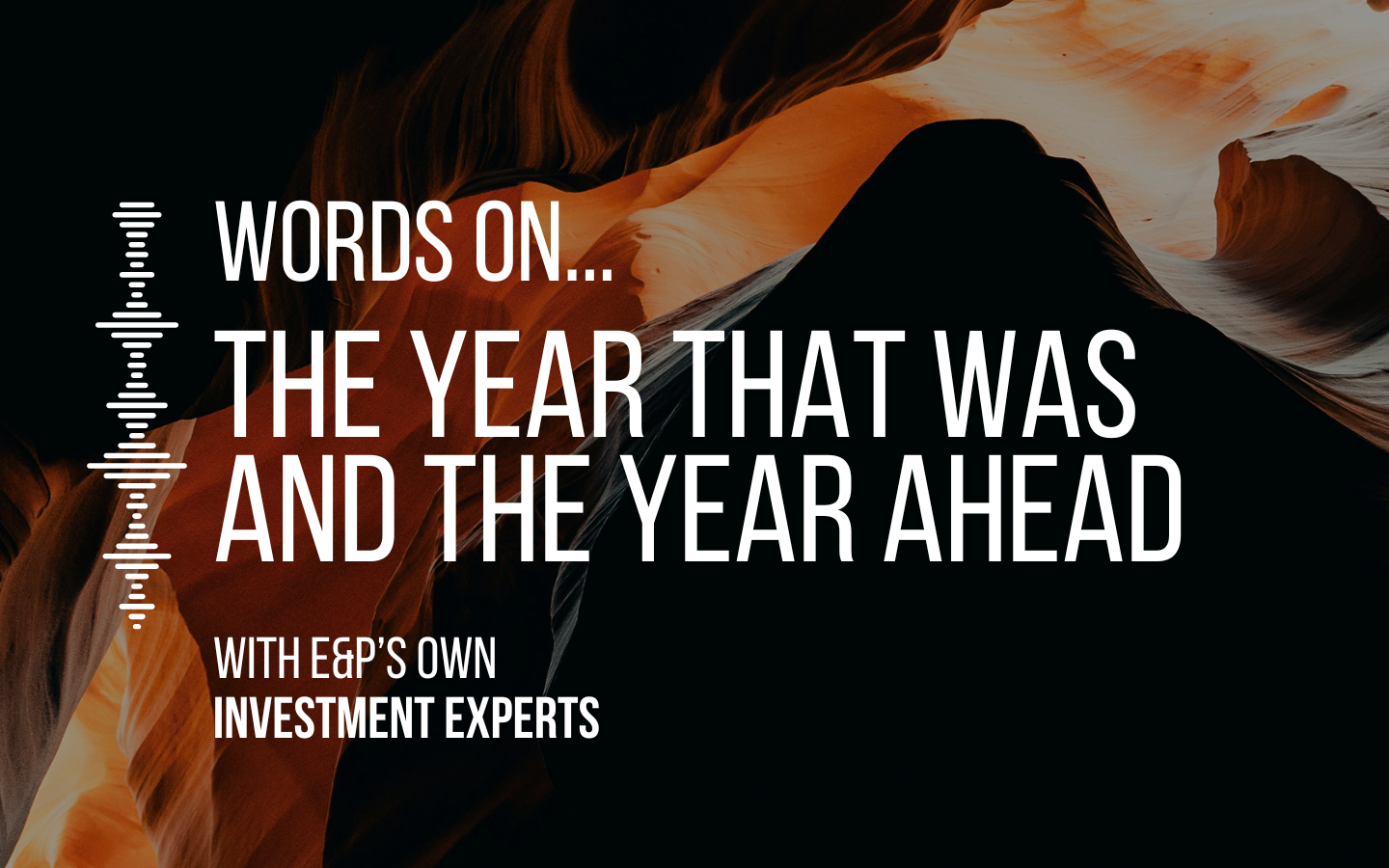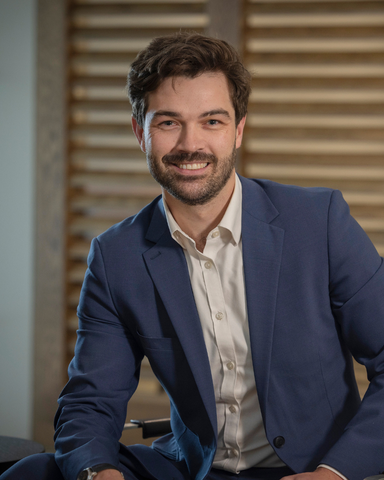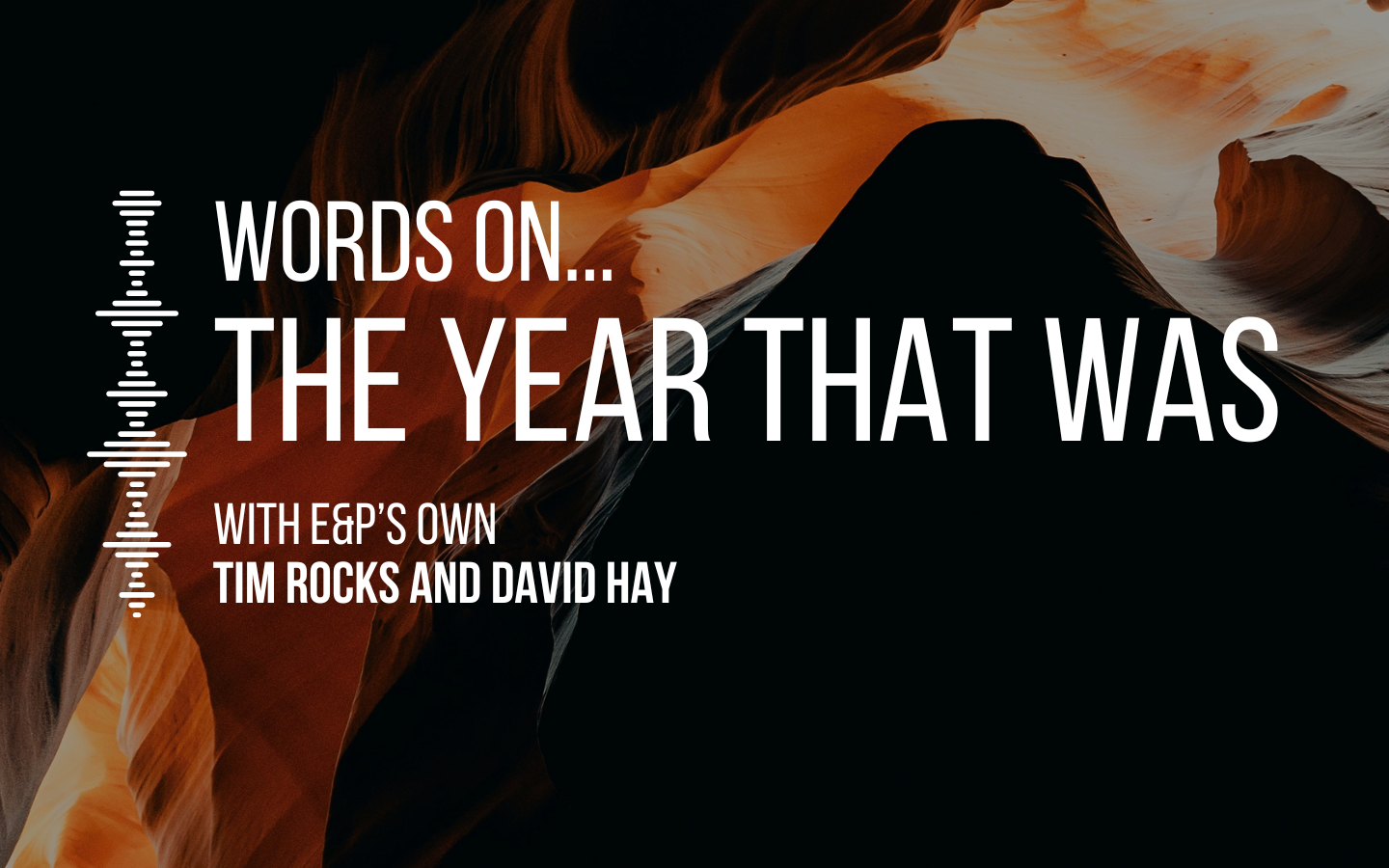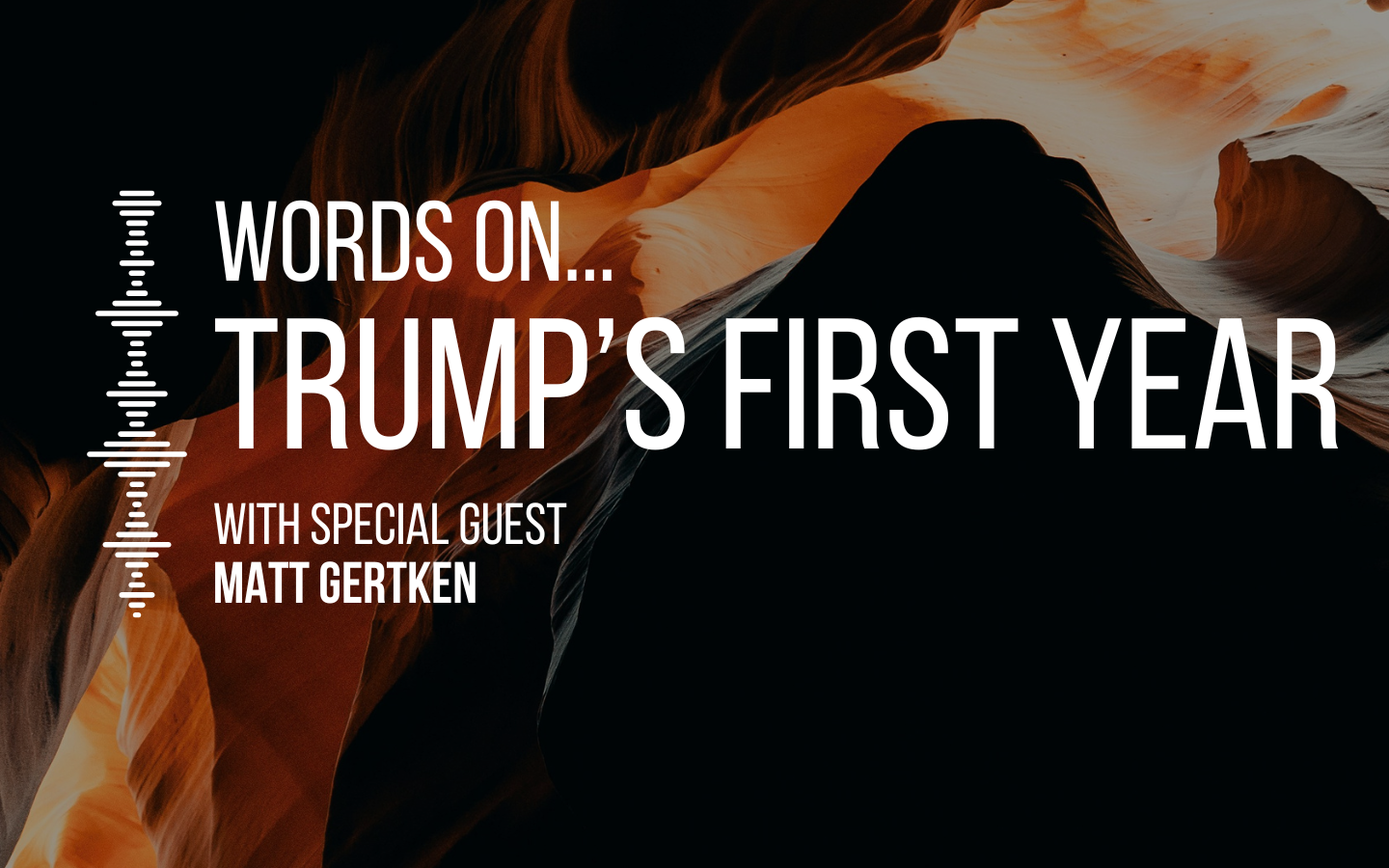


In this week’s Words on Wealth, host Will Hart, Head of ESG and Sustainable Investment at Evans and Partners, speaks with Dave Helgerson, Managing Director at Hamilton Lane, about the growing role of impact investing in private markets. They discuss where they see capital is flowing – from energy transition to healthcare – the opportunities they’re identifying that deliver meaningful outcomes without compromising returns, and why now presents a compelling time to invest. Tune in to find out more.
Disclaimer
This podcast was prepared by Evans and Partners Pty Limited AFSL 318075.
Any advice is general advice only and was prepared without taking into account your objectives, financial situation or needs. Before acting on any advice, you should consider whether the advice is appropriate to you. Seeking professional personal advice is always highly recommended. Where this presentation refers to a particular financial product, you should obtain a copy of the relevant PDS, TMD or offer document before making any investment decisions. Past performance is not a reliable indicator of future performance.
Directors, employees and officers of Evans and Partners and its related bodies corporate may have holdings in the securities discussed. Any taxation information is general and should only be used as a guide.
This communication is not intended to be a research report (as defined in ASIC Regulatory Guides 79 and 264). Any express or implicit opinion or recommendation about a named or readily identifiable investment product is merely a restatement, summary or extract of another research report that has already been broadly distributed.
Will Hart
Hi, and welcome to this week’s episode of Words on Wealth. My name is William Hart and I lead the sustainable investment team here at Evans and Partners. In this week’s episode, I sit down with Dave Helgerson, who is managing director at Hamilton Lane, where he leads their impact and targeted investing activities, serving on both the firm’s investment committee and also their responsible investment committee. Now, Dave has been with Hamilton Lane for over 20 years, having joined in 2004 after starting his career as a corporate investment banker at Morgan Stanley and Credit Suisse First Boston. For those unfamiliar, Hamilton Lane is one of the world’s largest private markets investment firms globally with over $956 billion ⁓ US dollars in AUM and supervision. The firm has a long history with impact investing, managing some of their earliest targeted impact strategies over two decades ago. Now, before we get into the conversation, I do wanna address the question, what exactly is impact investing for the audience. So simply put, it’s making investments with the explicit intention of generating both positive social and environmental outcomes alongside competitive financial returns. Now, importantly, this isn’t philanthropy, what we are talking about are market rate returns commensurate to investment risk. However, unlike traditional investing, which focuses purely and only on financial performance, impact investing deliberately seeks opportunities where capital can be used to help address some of the most pressing global challenges. So think areas like distributed energy, affordable healthcare, or financial services for underserved communities. In today’s conversation, we’ll dig into this topic further and explore how Hamilton Lane approaches impact investing in private markets. We’ll get their thoughts on current markets and opportunities Dave’s team are seeing and how investors can thoughtfully consider impact within their private markets investment allocations. So now let’s dive into our conversation. Dave, welcome to the podcast.
David Helgerson
Thanks Will, appreciate it.
Will Hart
Now, firstly, I do just want to start by talking about the history of Hamilton Lane and your association with impact investing. for those who listening who don’t know Hamilton Lane is one of the world’s largest private market investors, but have also been involved in impact investing for over two decades now. Can you talk me a little bit about why one of the world’s largest private markets investors has been associated with impact investing?
David Helgerson
Well, you know, and it comes back to following our clients where they want us to go, right? So we’ve been around for well over 30 years and have almost a trillion dollars of assets under management. We deploy over $34 billion in last year’s case of capital into the private markets. But we work with clients to kind of build strategies that suit their needs. And about 25 plus years ago, one of our clients asked us to build them a strategy that involved investing in underserved markets, investing in small growth-oriented companies and tracking certain metrics around demographic growth, around getting capital into certain types of business managers and owners. Women minorities were part of that, but also just getting capital into markets that were undercapitalized. And that was really the stepping off point for us in thinking about impact and how private market capital could deliver some of these other positive benefits. And so bringing that from the history to today, what does Hamilton Lanes Impact footprint look like today? Well, today we manage close to $4 billion of capital across different accounts. that small regional investing program grew over a billion and then we did that several other times with large US pension funds to build a long track record of success across different impact strategies. But what really kind of launched what we’re doing today was an approach to seeing, first of all, recognizing that we can take the breadth of our platform, the access to deals, the relationship bases that we have with managers around the world and really target it, focus it on certain themes that we think are really appealing from an impact perspective. We look at companies that are delivering value and helping to really solve big problems on the environmental side and the social side. So that could be energy transition, could be sustainable business models, healthcare and wellness, or getting better access to certain services that are hard to access. And what we found is that private markets are really a catalyst to bringing capital in and driving growth and change. ⁓ Usually that’s through tech enabled businesses and innovation.
Will Hart
So just in terms of those sort of ⁓ core themes that you talked about, you the energy transition, healthcare, education, can you explain what makes a business impactful ⁓ in supporting those different areas? What are you looking for when you make an investment into those subsectors?
David Helgerson
Absolutely. And first, we’ve identified some areas where there’s opportunity, like demand drivers of capital, right? ⁓ And also looked for themes where we see these big secular trends, there is basically consistent growth in capital formation and business growth in certain areas. But there are criteria that we use to evaluate and underwrite the impact, so to speak. And it starts with us identifying what the impact challenge or opportunity is, really assessing who’s benefiting and why. Why is that relevant? Why is that an important challenge or solution that we’re providing? We kind of rank and evaluate that. And then we get more into some of the depth of underwriting impact and we look at the alignment of the business towards the impact mission. So we want those companies that we’re investing in to be fully aligned and we kind of say, co-linear so that as the business grows, the impact grows. We also want there to be an intentionality within that business to delivering solutions to the areas that we think are important. And then the third thing we look at are kind of metrics and measurement. We want to make sure that we can identify key KPIs that are supporting and demonstrating impact and identify that from the beginning and underwrite towards them and report back on them to our investor base. So those are all key criteria. We also look at the kind of additional impact that our capital is generating and the risk return of the impact as well as the financial return, of course. So then just to bring some of that to life, just maybe some stories of some of the companies that you have historically made investments in. I think that’s probably the most useful way to sort of, you know, bring that all together. You know, there have been so many amazing businesses that we’ve backed, you from software companies that are supporting, you know, grid stability to healthcare businesses, to smart cities, smart grid type businesses providing energy efficiency services. But one company just kind of stands out to me, which is a company we backed, ⁓ we’re actually still holding. It’s actually moving towards a potential exit. I’m not going to give the name of the business here, but… When we started investing in this company, so first of all, it’s a company that provides cold chain logistics. it uses reusable containers and packaging, actually technology built by NASA ⁓ to help deliver healthcare products, typically healthcare therapies and vaccines and biologic type products to their end users, to physicians and patients around the world. ⁓ And it does so by managing its temperature control so that there isn’t any breakage along the way. So those healthcare products work. But what’s cool is that it uses this packaging a hundred times before it goes into waste. And so it’s reducing waste, but it’s also providing a better product. And we’ve seen this company grow from 10 million in revenue to a hundred today, to where we think it’s going to be close to 150 at the end of the year. And they just launched a big new contract with one of the largest, let’s say the largest GLP weight loss providers in the world. Where this company is gonna continue to grow, we think two or three times where it is today. So really interesting in that it’s touching both social objectives and environmental objectives and providing a really unique, sustainable solution.
Will Hart
Yeah, that’s fantastic. And then I do, obviously from your accent, you are from the US. A lot of the work that Hamilton Lane does is within the US and I think it’s difficult to have this conversation, particularly as it relates to impact without talking about Donald Trump, the current political environment, the impact that that is potentially happening or having on some of the industries within which you’re investing and these businesses are operating within. Can you talk a little bit about that? Is the way that you’re investing being impacted by some of the geopolitical ruptures, the changes in regulations, a potential drawback of the IRA as an example?
David Helgerson
Well, you know, it’s a great question. look, in every cycle or mini cycle, there’s political change. There’s some uncertainty that we need to kind of be aware of, maybe adapt towards or away from. So we’re really thoughtful around supply chain risk, tariff risk, for example. We’re careful about avoiding investing in subsidized businesses that could go away. But one of the things that we see ⁓ is, and this is kind of a, let’s say more of a deregulatory framework that’s in place in the current administration in the US, what we’re seeing is that to really create long lasting solutions in sustainable areas, it needs to come from the private sector and you need to build sustainable businesses for the long term. And so that’s why we think private equity, private markets are great places to go to find technologies that are proven in commercial areas that are proven but need capital to scale. And so that’s what we’re doing really. You know, there’s a lot of noise out there. know, some of that noise is relevant and, ⁓ you know, often we kind of say the pendulum swings back and forth a little bit, but we’re seeing really good businesses that have been formed over the last decade that are growing and need more capital to scale, regardless of which administration is in place. And so, yes, we need to avoid the landmines, ⁓ but what we see is a lot of opportunity. And then when it comes to opportunity, just picking up on… on that final word you sort of talked about there. When you look forward to future investments, what sort of industries, sectors, business model types you attracted to, where is your area of focus? Well, we kind of divide our landscape into both environmental and social areas. And on the environmental area, look at both clean energy transition and sustainable solutions and processes. The clean energy transition may seem simple, but it’s actually pretty complex. It’s not just about solar power generation or geothermal or wind generation, but all of the kind of activity in the ecosystem that’s building a more decentralized electric network, supporting the growth that the world is kind of demanding. And so we see a lot of infrastructure services and software tools that are helping to support resilience and advance kind of a more cleaner world there. On the sustainable solutions, this can include anything. It really can involve any type of industry from waste management and recycling to ag tech to business services to supply chain management. So it’s just finding ways to do things better, more efficiently, to do more with less. And ultimately that’s what any business innovator wants to do. So we’re finding really cool companies. I mentioned the supply chain business earlier, one that’s a company that’s using recycled plastics to do all sorts of things. Those are examples. then on the social side, companies in healthcare that are using telemedicine to bring better access to healthcare, to underserved populations, or better outcomes through products and services. And so it’s really a broad landscape and it allows us to be nimble, to lean into areas of opportunity, but also to be disciplined where we’re investing. And I think the question there about discipline when you’re investing. When it’s come to lot of sustainability-orientated businesses, valuations maybe a few years ago were relatively elevated. Is now a good time to revisit private markets, different forms of investment when it comes to the financial prudence, I suppose. It really is. And we think this is, and I don’t want say ideal, but it is a really attractive buyer’s market. There’s more rationality from an investment perspective. That’s partially because there’s been a retrenchment of capital. There’s less capital available. And so ⁓ we see more discipline around pricing in general. ⁓ And the companies that we’re looking at are still growing and need capital to kind of thrive. But unlike what we saw in 2020 and 21, people aren’t just jumping into businesses that are hot sectors. And so that’s what we like. We like finding good solid businesses that have great fundamentals and macro trends and being able to come into them at a fair and reasonable price.
Will Hart
Well with that, I think that’s enough for today. So thank you very much. Just a reminder for everybody listening that everything we did talk about was general advice only. But Dave, thank you very much for joining us.
David Helgerson
Thank you for having me.
Tags
Disclaimer
This podcast was prepared by Evans and Partners Pty Limited AFSL 318075.
Any advice is general advice only and was prepared without taking into account your objectives, financial situation or needs. Before acting on any advice, you should consider whether the advice is appropriate to you. Seeking professional personal advice is always highly recommended. Where this presentation refers to a particular financial product, you should obtain a copy of the relevant PDS, TMD or offer document before making any investment decisions. Past performance is not a reliable indicator of future performance.
Directors, employees and officers of Evans and Partners and its related bodies corporate may have holdings in the securities discussed. Any taxation information is general and should only be used as a guide.
This communication is not intended to be a research report (as defined in ASIC Regulatory Guides 79 and 264). Any express or implicit opinion or recommendation about a named or readily identifiable investment product is merely a restatement, summary or extract of another research report that has already been broadly distributed.


